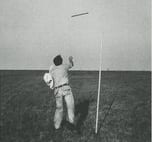“So we ask, what does homeliness mean and how is it created?” ((Bollnow, O.F (2011) “Human Space” London: Hyphen Press p.142.))
This is an interesting thought, how does one create homeliness? If we apply this notion to the house on West Parade, we can look at the aesthetic and objects of the house. Most room’s contain furniture to identify the use of each space (i.e. bed = bedroom, sofa = living room) however would these room’s still create that sense of homeliness without the furniture? In the living room we have experimented with the feel of the room, simply by moving the sofas into different positions has made us feel more relaxed and made the room more homely.
Keeping the doors shut moves onto another factor that adds to the feeling of homeliness, warmth. Feeling cold instantly changes the mood and feel of a room, I think this is perhaps why the ‘cot room’ creates the opposite feeling of homeliness as there is no radiator meaning it is always cold which makes people feel uneasy. ‘What does homeliness mean?’ – Personally, I think it is a dwelling in which you can feel comfortable, relax and be yourself. However, I think this is only possible if the environment can totally put the individual at ease. “Warmth, seclusion, size, security, stability, history and objects” ((Bollnow, O.F (2011) “Human Space” London: Hyphen Press p.144.)) are all factors that have the potential to make a space feel homely. It is these factors that we want to weaken to challenge the notion of home and make the audience distinctly aware that this space is not a home.
“One must also be able to see that the room has been lovingly cared for. But even though disorder and neglect have a disquieting effect, an excess of orderliness is also oppressive, because one is afraid of disturbing the order. The room must also show that it is lived in, and this means that certain signs of life – a book that has been laid aside, work that has been begun – should be recognizable in it.” ((Bollnow, O.F (2011) “Human Space” London: Hyphen Press p.144.))
This stimulus is at the very heart of what our group intend to create as we plan to play on the fact that a room should be lived in by placing stacks of empty pizza boxes and alcohol bottles all around the room.
|
The living room of the house on West Parade showing pizza boxes, beer bottles and other materials. Photograph by Sam Davis. (Please click on the picture to view the Living Room page to learn more about our performance ideas) |
Using this as an extreme of a home that has been lived in, will subvert the audiences thinking of how a home should be presented and feel. The living rooms aesthetics already provide a contrast to the belief that a home should be cared for, the wallpaper is stained and peeling.
Creating surroundings that show they have been cared for and lived in will always be artificial in a performance. This is typified from the history and the use of West Parade house as it is set up to represent a certain dynamic. However our space can be changed and moulded to present a different home artifice. An artifice that says: “Everything looks okay on the surface, but is it ?”
|
Photograph from Human Space book cover. ((Bollnow, O. (2013) Human Space. [image online] Available at: http://www.mottodistribution.com/shop/publishers/hyphen-press/human-space.html [Accessed: 22nd February 2013].)) |

